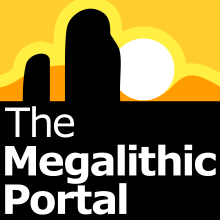Submitted by coldrum ---
Another description of the remains of this Florida Chiefdom culture and a description of the public outreach conducted by the Randall Research Center.
The Smith burial mound along the Calusa Heritage Trail is clearly marked by a sign along the path. Yet, skulls and bones are nowhere to be seen. Florida laws protect ancient human remains and at Smith Mound, they remain hidden behind a fence and vegetation. My guide, Kara Sweeney, regional director of the Florida Public Archaeology Network, tells me we just passed what may have once been a moat that surrounded the 1,100-year-old burial site.
A 3,700-foot walkway makes up the Calusa Heritage Trail in Pineland, in northern Pine Island. It is run by the Randell Research Center, whose new waterfront office is now located in Matlacha. The Research Center, a program of the Florida Museum of Natural History at the University of Florida, opened in 1994 after the Randell family donated more than 50 acres to the school. It operates to maintain the Pineland site and teach the community about local history and archaeology.
Sweeney says she hopes people don't get the wrong impression from the title "research center." While it may imply the site is private or strictly for scientists, she says, all people are welcome to visit and even volunteer there. She lectures at local schools and hosts field trips at the Pineland site.
It's hot and sticky but the mosquitoes and fire ants are largely absent today. There is even a slight breeze. The ground we are standing on has been inhabited for about 2,000 years. The site was excavated in the 1890s and again in the 1980s. Over time, archaeologists concluded the site was a major center for the Calusa Native Americans.
Mound Key, located in Estero Bay, is thought to have been the capital of the Calusa, once the most powerful people in South Florida. "Mound Key would be like Washington D.C. and this would be New York," Sweeney said.
According to David Southall, curator of education at the Collier County Museum, the Calusa, at their height, controlled 11 cities with populations of a thousand each. Their extensive trading network stretched across Florida, where several other tribes paid tribute to the Calusa.
They had a standing army ready to dispatch when needed and were even able to hold off the Spanish, who Southall said were never able to defeat the Calusa. But by the 1700s, the Calusa had succumbed to disease and forced slavery imposed by other tribes with firearms.
Walking on the trail's boardwalks, we run into a papaya tree, which was an important food source for the Calusa. Unlike many other Native American cultures, the Calusa were not an agricultural society. Using palmetto-fishing nets weighed down with cockle or scallop shells, the Calusa relied on fishing and some hunting to survive.
For more, see the Fort Meyers Florida Weekly.
Something is not right. This message is just to keep things from messing up down the road
